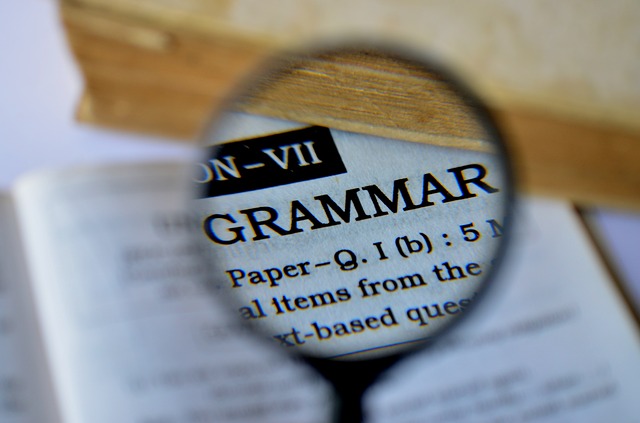Grammar Spotlight
 The English Grammar Profile (EGP) is a sister resource to the English Vocabulary Profile, and has been put together by Anne O'Keeffe (Limerick University) and Geraldine Mark, the co-authors, along with Ron Carter and Mike McCarthy, of English Grammar Today (Cambridge University Press). Mark and O'Keeffe investigated the extensive data in the Cambridge Learner Corpus to establish when learners begin to get to grips with different linguistic structures.
The English Grammar Profile (EGP) is a sister resource to the English Vocabulary Profile, and has been put together by Anne O'Keeffe (Limerick University) and Geraldine Mark, the co-authors, along with Ron Carter and Mike McCarthy, of English Grammar Today (Cambridge University Press). Mark and O'Keeffe investigated the extensive data in the Cambridge Learner Corpus to establish when learners begin to get to grips with different linguistic structures.
A series of insights from their research will be posted on this page, each one putting the spotlight on an interesting aspect of learner grammar development. Please note that all of the learner examples come from the Cambridge Learner Corpus, a 55-million word electronic collection of written learner data. The examination and the candidate’s first language are given in brackets after each learner example.
See the latest Grammar Spotlight entry below. Scroll right down to the bottom of this page to browse through previous entries.
As to be expected, learners at the B2 level can use an increasing range of verbs. This is especially clear in learners’ use of the present perfect simple in the question form.
 How has your family been? (Cambridge English: First; Spanish - Latin American)
How has your family been? (Cambridge English: First; Spanish - Latin American)
 But what have these animals done? (Cambridge English: First; Dutch)
But what have these animals done? (Cambridge English: First; Dutch)
 In 1970 people in the UK married in their early 20s, but nowadays they marry at the end of their 20s. But why has this changed? (Skills for Life: Level 1; German)
In 1970 people in the UK married in their early 20s, but nowadays they marry at the end of their 20s. But why has this changed? (Skills for Life: Level 1; German)
The focal point of improvement for learners at the B2 level is seen in their use the negative form of the present perfect simple with still to emphasise that something that was expected to happen continues not to happen.
 I still haven’t read the role but when I read it, I was very excited and I accepted Mr Brown’s offer. (Cambridge English: First; Greek)
I still haven’t read the role but when I read it, I was very excited and I accepted Mr Brown’s offer. (Cambridge English: First; Greek)
 You asked me whether I bought a computer or a bicycle and I have to tell you that I still haven’t decided. (Cambridge English: First; Swedish)
You asked me whether I bought a computer or a bicycle and I have to tell you that I still haven’t decided. (Cambridge English: First; Swedish)
It is the formality of contexts, however, that presents the key difference seen at the C1 and C2 levels. Learners at the C1 level, for example, use the full negative form with a wide range of verbs, often in formal contexts.
 Thus, you have not fulfilled your task with due care, as you have stated in your letter. (Cambridge English: Legal; German)
Thus, you have not fulfilled your task with due care, as you have stated in your letter. (Cambridge English: Legal; German)
 Somehow, in my country education has not evolved, although it manages to maintain some advantages. (Cambridge English: Advanced; Serbian)
Somehow, in my country education has not evolved, although it manages to maintain some advantages. (Cambridge English: Advanced; Serbian)
At the C2 level, learners can (although they do so infrequently in written work) use the present perfect simple to introduce news.
 A new shopping centre has opened in our town. (Cambridge English: Proficiency; Russian)
A new shopping centre has opened in our town. (Cambridge English: Proficiency; Russian)
So, between the B2 and C2 levels, learners develop their ability to emphasise expectations using still with the present perfect simple and utilise this verb tense in a formal context. The final stage of learner development being in the formal context is typical for learners as they grow to master the English language.






